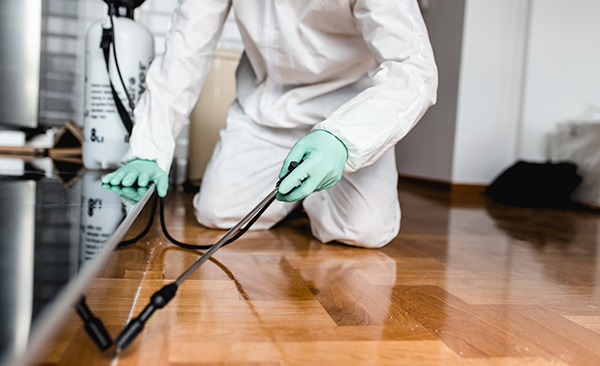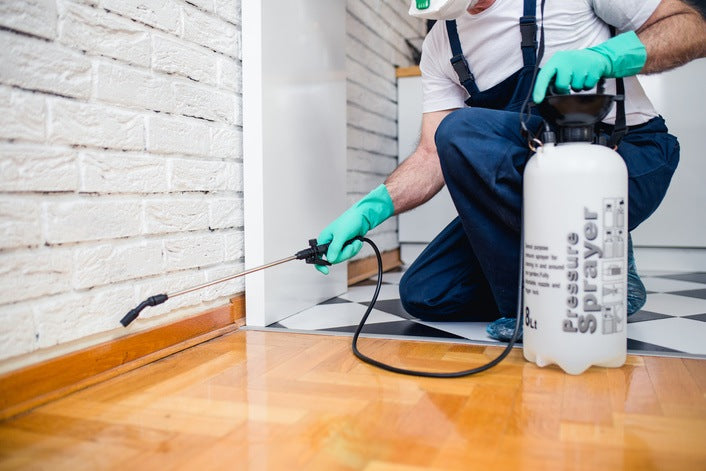Exploring Problem and Treatment Strategies worldwide of Bug Control
The landscape of insect control incorporates a myriad of obstacles, particularly as infestations of common home bugs proceed to advance. By incorporating preventive steps with sophisticated administration methods, such as Integrated Bug Monitoring (IPM), home owners can much better guard their settings.

Typical Home Pests
When it pertains to handling our space, recognizing usual house parasites is crucial. These pests not only interrupt our convenience yet can additionally posture wellness threats and damages building. One of the most common home pests consist of ants, roaches, rodents, termites, and bed insects.
Ants, usually seen foraging in cooking areas, can pollute food and develop large colonies. Cockroaches, understood for their strength, can set off allergic reactions and spread microorganisms. Rodents, consisting of computer mice and rats, can trigger structural damages and bring illness like hantavirus and salmonella. Termites, typically referred to as "quiet destroyers," can jeopardize the integrity of wood frameworks, resulting in costly fixings. Bed insects, although not disease carriers, can create considerable pain with their bites and bring about mental distress.
Recognizing the indicators of these insects, such as droppings, nests, or attack marks, is vital for very early intervention (Pest Control Lockhart). Correct cleanliness techniques, sealing access points, and keeping a clutter-free environment are reliable preventative steps. By recognizing these common house pests and recognizing their behaviors, house owners can take proactive steps to minimize infestations, making sure a healthier living atmosphere
Recognizing Pest Infestations
Bug infestations can intensify promptly, turning a minor nuisance right into a considerable trouble otherwise attended to promptly. Comprehending the nature of these invasions is crucial for efficient administration. Parasites can invade domestic and industrial rooms for numerous reasons, including the search for food, shelter, or breeding premises. Typical variables adding to infestations include bad cleanliness, architectural susceptabilities, and seasonal adjustments that drive parasites indoors.
Identifying the type of pest is essential, as different species show diverse habits and reproductive rates. Rats may establish nests in hidden locations while bugs like cockroaches thrive in wet atmospheres. Early detection typically depends upon recognizing indicators such as droppings, chomp marks, or unusual sounds, which can show an issue before it comes to be serious.
Cozy, humid climates can promote the rapid growth of bug populaces, while modifications in landscape design or building and construction can inadvertently produce helpful environments. An educated strategy to understanding these dynamics lays the groundwork for efficient parasite management techniques in the future.
Therapy Approaches and Techniques
Effective treatment techniques and strategies are essential for reducing bug invasions and recovering a secure setting. A multifaceted approach is typically best, integrating chemical, organic, and mechanical methods customized to the details parasite and the severity of the infestation.
Chemical treatments consist of the usage of pesticides and herbicides, which can effectively eliminate pests. However, proper application and adherence to safety standards are crucial to minimize threats to human beings and non-target microorganisms. Integrated Bug Administration (IPM) motivates the cautious use chemicals as a last hope, counting rather on tracking and threshold degrees to establish intervention needs.
Organic control methods entail presenting all-natural killers or bloodsuckers to minimize bug populations. This strategy is progressively popular, specifically in agricultural setups, as it promotes ecological sustainability.
Mechanical methods, such as catches and barriers, supply immediate remedy for pests without presenting chemicals. Options include sticky catches for insects or physical obstacles for rodents.
Eventually, the selection of treatment approach should take into consideration the specific bug, the environment, and prospective effect on human health and ecological communities. A balanced mix of these strategies can efficiently take care of infestations while promoting long-lasting pest control services.
Safety Nets for Homes
Proactively attending to parasite issues before they intensify is essential for maintaining a healthy home atmosphere (Pest Control Lockhart). Carrying out reliable preventive steps can dramatically reduce the likelihood of invasions, eventually securing both your residential or commercial property and wellness

Proper landscape design additionally plays a crucial duty in avoidance. Maintaining bushes and trees trimmed away from your house reduces the opportunities of parasites locating their method inside your home. Additionally, ensure that drainage systems are operating effectively to avoid standing water, which can pull in insects and various other bugs.
Finally, routine examinations are a good idea. Frequently checking for indicators of bug activity permits early treatment. By embracing these safety nets, property owners can create an atmosphere that is less friendly to bugs, discover this thereby boosting their overall top quality of life and decreasing the demand for substantial pest control interventions.
Business Insect Control Approaches
An extensive strategy to industrial parasite control is vital for businesses aiming to maintain a risk-free and hygienic atmosphere. Efficient techniques involve a mix of normal evaluations, worker training, and the application of Integrated Bug Management (IPM) methods.
Routine inspections allow very early discovery of pest activity, enabling for prompt treatment. Businesses must create a regular schedule for these assessments, focusing on high-risk areas such as cooking areas, storeroom, and waste disposal sites. Worker training is similarly critical; staff ought to be informed on the indications of bug problems and the relevance of reporting them instantly.
Executing IPM methods assists alleviate bug concerns sustainably. This consists of environment alteration, such as securing access factors and lowering mess, along with using all-natural deterrents prior to turning to chemical treatments.

Furthermore, working together with a certified insect control supplier makes sure accessibility to professional knowledge and advanced treatment alternatives. This collaboration can cause personalized insect control plans customized to the details requirements of the service, lessening risks and enhancing total effectiveness. Eventually, a proactive and enlightened technique promotes a pest-free environment, guarding both public wellness and company this article credibility.
Verdict
In verdict, efficient pest control demands a detailed understanding of common house insects and their behaviors, paired with targeted treatment approaches. Carrying out preventive actions together with therapy techniques such as Integrated Pest Administration and biological control improves the ability to alleviate infestations. Routine inspections and a mix of chemical and mechanical solutions additionally contribute to preserving pest-free environments. Eventually, a well-rounded technique to pest management is vital for safeguarding living areas from undesirable intruders. you could try this out